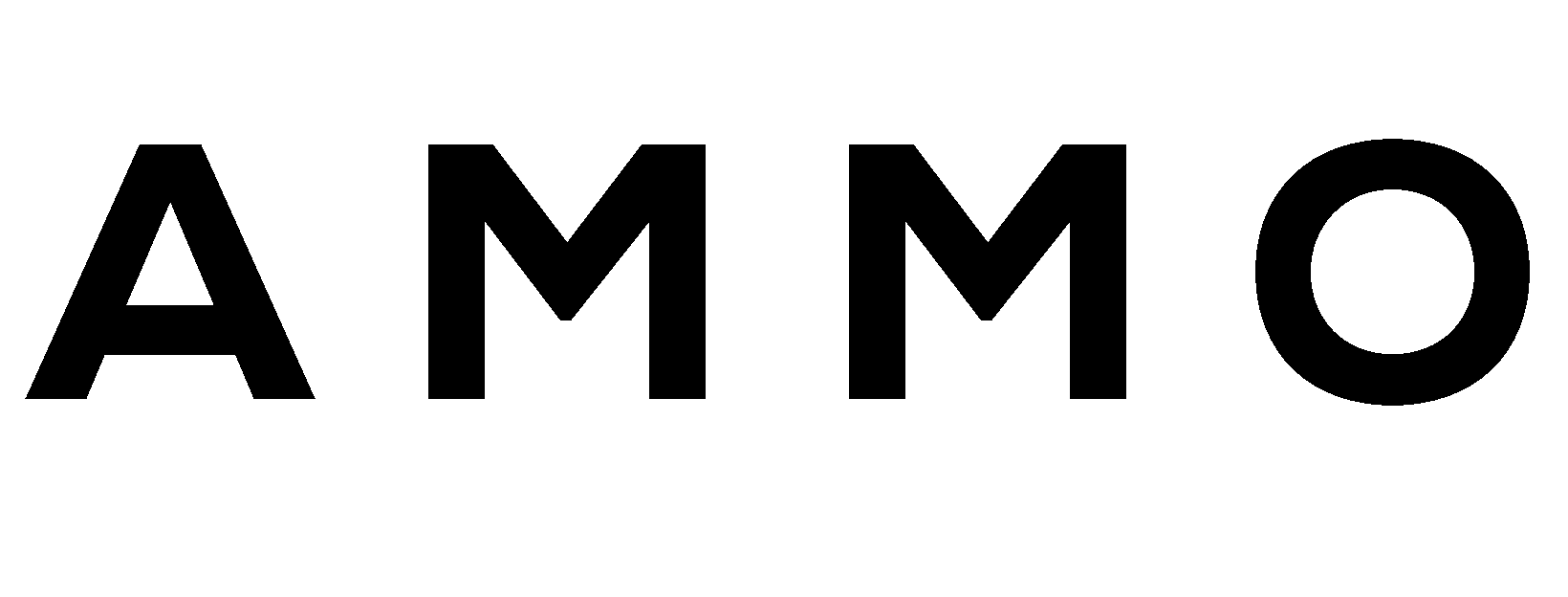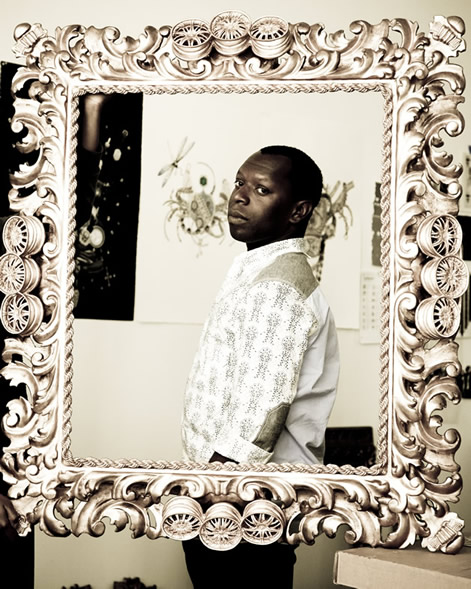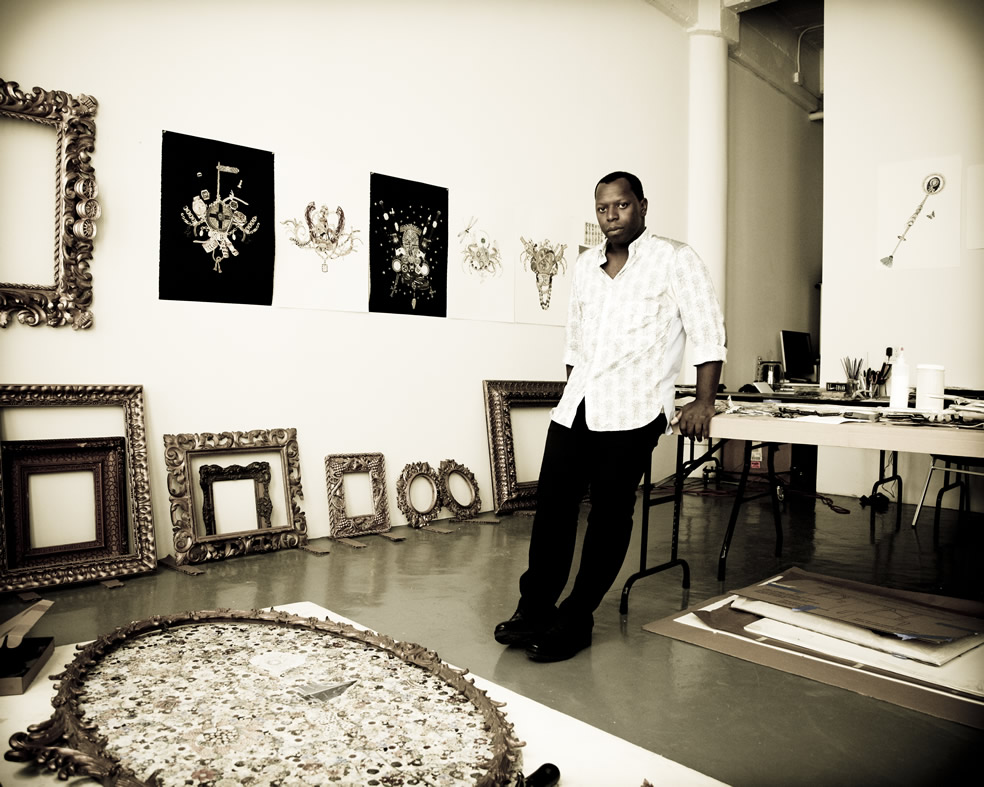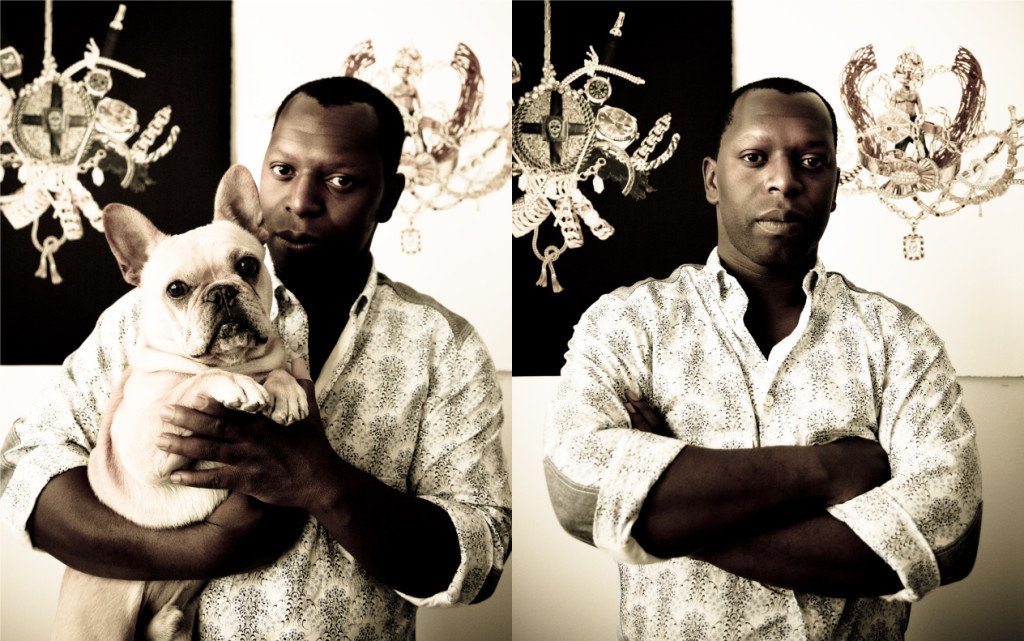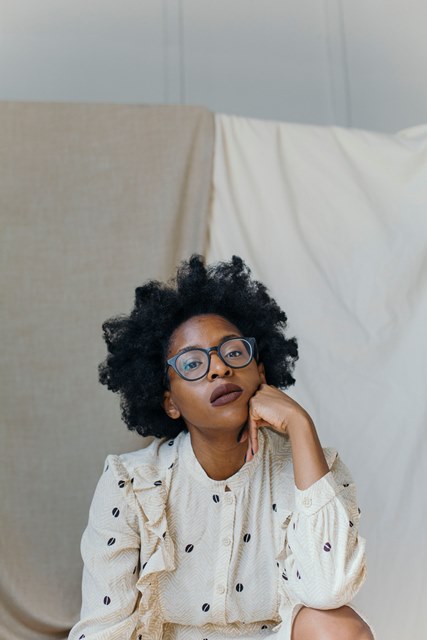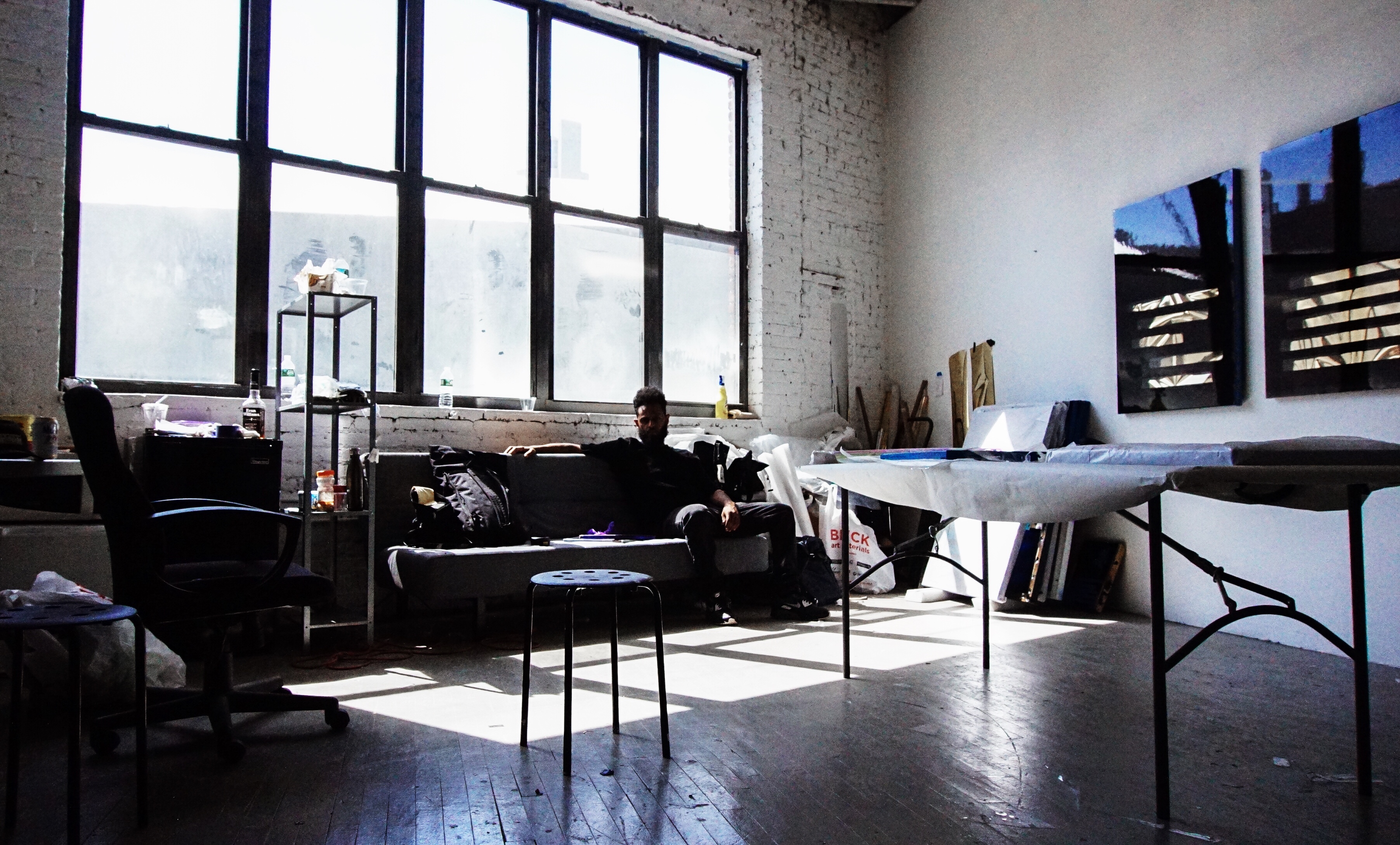Interview by Lauren Downing
Photos by Aurelie Graillot
I’ve seen a lot of great artwork through my travels. In the time I was abroad, I think I visited every must-see museum in Europe. However, I remember passing through those great halls, hour after hour, with only a passing interest in the great volume of artwork I was in the presence of. In his 1980 work, Camera Lucidia, Walter Benjamin wrote of studium and punctum with regard to his experience with photography. So as not to belabor my point, Benjamin would basically say that it is by stadium—or a passing, general interest—that I am interested in artwork as a whole by way of my art history degree.
Punctum on the other hand is a prick, or those images or parts of images that are cause for pause; they are those everlasting visages that stick with you and speak to your personal aesthetic sensibility.
For me, Rashaad Newsome is that prick (in the strictly Walter Benjamin sense, that is). In a roundabout way, what I’m trying to say is that in all of my museum visits, the images I most remember are those that were by the hand of Rashaad Newsome. I think this is because his artistic vocabulary is unflinchingly contemporary, ever-evolving and fresh—drawing from a smart host of recognizable symbols and themes that run the gamut of high and low culture.
While I have always been able to read a coherent narrative running throughout his work, Newsome sees it differently; put simply, he rolls with the punches, working in any medium that feels right at the moment and engaging in an ongoing conversation with his practice. Through his easygoing ways, Newsome has become an art world darling in the eyes of rappers, curators, gallery owners and the general public.
In our talk, I was also happy to find that he has an easygoing demeanor to match the spirit of his artwork.
What’s your AMMO?
Rashaad Newsome: Music, music videos, movies, my community, pop culture and art history to name a few.
How did you discover your calling?
RN: When I was in Junior High I was constantly getting into trouble for drawing in class. This ultimately led to me being enrolled in a program called Talented Art where I met my first real artist who became a sort of mentor. So I guess then.
You work in nearly every conceivable artistic medium, however there are certain themes and, well, feelings or sensibilities running through your artworks that are difficult to articulate. What story is it that you’re telling through your art and how do the different media help to round that narrative out?
RN: I don’t think that there is or will ever be one story but rather an ongoing conversation that changes at whim. Going beyond any idea of origin, I amalgamate varying forms of usage and appropriation of modes of expression. Using the aesthetic strategy of collage, my performances, videos, collages and sculpture work to oppose cultural essentialisms. They lead us into a realm of uncertainty, in which the symbols presented lose significance, but are nonetheless made comprehensible by means of their affective and associative potential. My propensity to not work in one medium I think comes from the nontraditional training that makes up my practice, i.e. art history, film, music production, Djing, and programming. In some ways I think the collaged nature of the work is facilitated by the collaged nature of the studio practice.
How have you reconciled your increasing notoriety and rising cachet within the art world with your role as a living, working artist? Has the fame at all changed the course of your artistic vision?
RN: Not really; it has just allowed me to branch out into other creative worlds, which is very important to me.
What are your artistic references?
RN: There are so many but to name a few Steve Reich’s Drumming, Giuseppe Arcimboldo, Merce Cunningham and John Cage.
Is there a certain painting or sculpture or video installation you would dream of seeing one of your pieces displayed next to?
RN: I would love to have an exhibition in Versailles, which I think is an amazing piece of art in itself.
What do you want your legacy to be?
RN: I think the definition of “fine art” has been expanding since Duchamp, but the rate of this expansion has substantially increased with the advent of the computer and multi-media art in the last fifty years. The possibilities are just endless now and I want to use them in as many different ways as possible. I know there is a need for people to associate artists with a particular medium, but as I continue to experiment in multiple non-traditional media throughout my career, I hope this labeling becomes more and more futile.
For work by Rashaad Newsome go to www.rashaadnewsome.com
